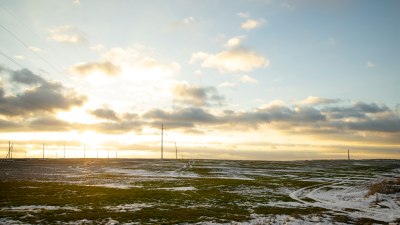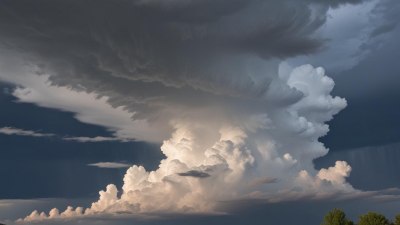Why the Weather Seems So Unpredictable This Time of Year
Explore the reasons behind the unpredictability of seasonal weather patterns and how they affect our daily lives.

The unpredictability of weather during certain times of the year can be both fascinating and frustrating. As seasons change, many regions experience a variety of weather patterns that seem to defy explanation. In this article, we will delve into the scientific principles behind these fluctuations, examining factors such as atmospheric conditions, climate change, geographic influences, and the impact of weather forecasting technology. Understanding why weather behaves unpredictably can help us appreciate the complexity of our planet's atmosphere and how it affects our daily lives.
One significant factor contributing to unpredictable weather is the transition between seasons. During times of change, such as the shift from winter to spring or summer to autumn, the atmosphere often experiences instability. Cold and warm air masses come into contact, leading to the development of storms, heavy rainfall, or sudden temperature shifts. These transitions can create a tug-of-war between competing air masses, resulting in unpredictable weather patterns that might include thunderstorms, hail, or even unexpected snow in warmer months.
Another important aspect is the influence of ocean currents and temperatures. The oceans play a crucial role in regulating weather patterns, and phenomena such as El Niño and La Niña can significantly affect climate. During an El Niño event, warmer ocean waters in the Pacific Ocean can lead to altered jet streams, resulting in wetter winters in some areas and droughts in others. Conversely, La Niña tends to bring cooler ocean temperatures and can lead to opposite weather effects. These ocean-atmosphere interactions contribute to irregular weather patterns that can be difficult to predict.
Geography also plays a critical role in how weather behaves. Mountain ranges, large bodies of water, and urban heat islands all influence localized weather conditions. Areas near large lakes or oceans tend to have more stable temperatures, while regions with mountains may experience dramatic weather changes due to elevation differences. For instance, when moist air rises over mountains, it cools and condenses, leading to precipitation in some areas while leaving others dry—this is known as the rain shadow effect. Thus, geography can create microclimates, resulting in an array of weather patterns across seemingly small distances.
The advent of climate change exacerbates the unpredictability of seasonal weather. As global temperatures rise, weather patterns are becoming more erratic. Increased evaporation rates lead to intensified storms along with periods of drought. With melting ice caps and shifting ecosystems, weather predictions are becoming more complex. For instance, regions that previously had predictable rainfall patterns may encounter severe flooding or prolonged dry spells, affecting agriculture and water supply. Scientists warn that as climate change progresses, we can expect continued variability and unpredictability in weather patterns around the globe.
Moreover, technological advancements in weather forecasting have improved our ability to predict short-term weather patterns, but the long-term outlook remains challenging. Meteorologists use sophisticated models that analyze data from satellites, radars, and ground stations to make predictions. Despite these advances, the chaotic nature of the atmosphere means that even the most advanced models can struggle with accuracy, particularly beyond a week’s forecast. This is especially true during transitional seasons when weather systems are dynamic and can change rapidly.
Public perception of weather patterns also affects how we interpret unpredictability. The availability of real-time weather updates through apps and social media means we are constantly bombarded with weather information. This exposure can create a heightened awareness of weather changes, making them feel more erratic than they may have been perceived in the past. Furthermore, when extreme weather events occur, they dominate news cycles, leading to a perception that such phenomena are becoming more frequent, thereby reinforcing beliefs in increasingly unpredictable weather.
Personal experiences can also shape our understanding of the weather. For instance, if someone has lived in a particular area for years, they may have expectations based on past weather patterns. However, when those expectations are shattered, as with unexpected snow in late April or an unseasonably warm day in December, it can create a sense of confusion or disbelief. These subjective experiences drive home the point that while we may understand the science behind weather, individual perceptions can vary widely.
Additionally, societal factors such as urbanization and land use changes contribute to localized climate variances and, consequently, unpredictability. Urban areas often experience the “urban heat island” effect, where cities become significantly warmer than their rural surroundings due to human activities and infrastructure. This temperature difference can cause storms to develop differently in urban settings compared to suburban or rural areas, leading to localized weather unpredictability.
In conclusion, the unpredictability of weather during transitional seasons is attributable to a complex interplay of various factors. Changes in air masses, ocean currents, geographical features, climate change, and societal influences all contribute to the variability we observe in weather patterns. By increasing our understanding of these components, we can better prepare for the sudden shifts in weather that often catch us off guard, highlighting the complexity and dynamism of Earth's atmosphere. As we continue to grapple with the effects of climate change and urbanization, remaining vigilant and informed will empower us to adapt to the ever-changing nature of our planet's weather.











